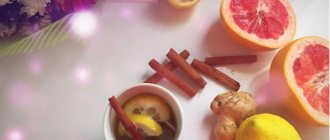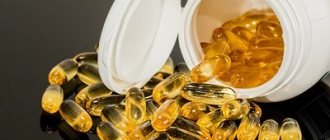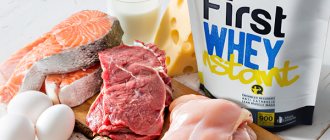The practice of colon cleansing dates back to the era of Ancient Greece. In modern times, this procedure gained popularity in the early 1990s. At that time, the theory was very popular that cleansing the intestines helps treat almost all diseases, prevents the appearance of new ailments, and also slows down the aging of the body. Years have passed and scientists have found evidence to disprove this theory, but nevertheless, many people around the world still continue to believe that colon cleansing helps improve health. So who and in what cases may need intestinal cleansing, what methods of procedure exist, and what is more of it - potential benefit or harm?
Colon cleansing: benefit or harm
Colon cleansing is a set of measures aimed at removing accumulated waste from the colon and intestinal tract.
Content:
- Colon cleansing: benefit or harm
- Colon cleansing methods
- Supposed benefits of colon cleansing
- Possible risks and disadvantages of cleaning
- What's the best thing to do for your gut?
- Colon cleansing products
- conclusions
Colon cleansing owes its popularity primarily to the theory of autointoxication of the human body. This theory states that undigested meat and other foods lead to the formation of excessive mucus in the intestines. And it, in turn, contributes to the accumulation of toxins that penetrate the bloodstream, poisoning the entire body. Some people consider symptoms such as fatigue, headache, weight gain, and lack of energy to be a signal of the presence of toxins in the body. But nevertheless, the theory of autointoxication has not found support in modern traditional medicine. On the contrary, experts remind that the liver neutralizes toxins in the body, and the specific intestinal microflora detoxifies food waste without outside help.
In addition, it is widely believed that regular colon cleanses can improve your immune system, lose weight, and even prevent colon cancer. Meanwhile, doctors are very skeptical about this theory.
But there are times when a colon cleanse is actually necessary. In general, cleaning may be necessary before certain medical procedures, such as colonoscopies.
Main signs of a contaminated organism
To identify signs of contamination in the body, sometimes it is enough to listen carefully to it. Detox is necessary if you have:
- regular headaches;
- constant fatigue, depression;
- pale skin;
- frequent allergic reactions;
- bad breath;
- gray or yellow coating on the tongue;
- systematic disturbances of the gastrointestinal tract.
Gently cleansing the body helps prevent these symptoms from occurring.
Colon cleansing methods
Colon cleansing can be done in two ways:
- consuming certain foods, medications and dietary supplements;
- using special hydro procedures.
The first method is based on the use of certain foods, herbal teas, dietary supplements or medications with a laxative effect. For example, in preparation for a colonoscopy, the doctor may prescribe the patient laxatives (bisacodyl, polyethylene glycol, magnesium citrate), which increase intestinal motility, thereby facilitating its rapid cleansing. In addition, magnesia, bentonite clay and other agents are used to cleanse the colon.
In addition to medications, natural remedies are often used to achieve a laxative effect. It has been known since ancient times that some plants and extracts from them make the intestines work faster. The effectiveness and safety of some herbal remedies have been scientifically proven. For example, in traditional medicine, to achieve a laxative effect, patients may be advised to use ginger, ginseng, maltose syrup, and Sichuan pepper extract. In Chinese medicine, hemp seeds are used to speed up bowel function, and in our region, mint or senna are often used for cleansing.
If colon cleansing does not have medical indications, but is solely a person’s initiative and is carried out “for prevention,” then it is better to rely on a diet rich in fiber. This is the safest way to cleanse your colon at home.
The second method of cleansing involves the use of enemas. For hydrotherapy, you can use either plain water or add vitamins, probiotics, enzymes, herbal decoctions, and citric acid to it. In medicine, this method of intestinal cleansing is usually used in cases where taking laxatives is impossible or does not give the desired result. The procedure may be prescribed to people taking drugs such as morphine or oxycodone, as they impair intestinal motility, causing patients to suffer from constipation.
Traditional methods of cleansing
Traditional medicine uses laxatives, which are available in the form of tablets, capsules, powders for making solutions, drops, and also in the form of microenemas, to cleanse the intestines of toxins and solve the problem of constipation. Even modern names of laxatives for constipation are not recommended for frequent use, as they can cause addiction and a number of other side effects. Before using any anti-constipation medication for adults or children, you should consult with your doctor.
In addition to laxatives, enemas are used to cleanse the body, the use of which also has regulations.
Possible risks and disadvantages of cleaning
Despite the fact that many perceive colon cleansing as a panacea for many health problems, most gastroenterologists are in no hurry to advise patients on this procedure. And they have at least three reasons for this.
First, there is no scientific evidence that colonic lavage improves patient health or is an effective treatment for chronic diseases.
Secondly, after cleansing, not only potentially harmful substances are washed out of the intestines, but also healthy microflora. But without it, the human body actually becomes vulnerable and prone to developing various diseases. By the way, the functioning of the immune system directly depends on the state of the intestinal microflora.
Third, if water cleansing is not done correctly, it can cause serious health problems, including colon perforation.
Colon cleansing should absolutely not be carried out if you have the following diseases:
- diverticulitis;
- ulcerative colitis;
- Crohn's disease;
- severe hemorrhoids;
- tumors in the sigmoid or rectum;
- severe heart or kidney disease.
Where to start cleansing the body
Cleansing should begin with the intestines , since it is where most toxins and wastes accumulate. Due to a lack of daily consumption of clean water, intake of low-quality products, and poor nutrition, food cannot be completely digested, so it begins to ferment there, rot, poisoning our body.
And its poisoning leads to excess weight, headaches, lethargy, and apathy. This is followed by serious illnesses, including cancer. Now do you understand how seriously you need to take cleansing this organ?
Read on the blog - Colon cleansing with salt water
Next we move on to liver . A polluted liver is not able to cleanse the blood well, and this leads to the fact that toxins begin to poison the entire body.
In addition, the liver secretes bile, which promotes the breakdown of fats. Is a clogged organ really able to cope with its task?
Read on the blog - How to safely cleanse the liver
Then we cleanse the kidneys - another blood filter. It is important to know that after cleansing the liver, the kidneys themselves begin to cope with the cleansing task.
There are also many ways to cleanse joints, lymph, blood, and parasites. Even in ancient times, people searched and found ways to cleanse their bodies, and we will find them too.
Read on the blog: How to clean blood at home
What's the best thing to do for your gut?
Experts say that what a person eats is much more important for the intestines, and not what he does with the colon. A healthy diet can improve overall well-being, promote weight loss and prevent many diseases, including cancer.
For people with a variety of gastrointestinal problems, including constipation and diverticulitis, it is important to focus on fiber-rich foods. Experts estimate that your daily diet should contain 25-30 g of fiber (for comparison, most people only consume about 15 g of fiber per day). You can increase the amount of this substance in your diet through vegetables, fruits, bran and whole grains. In addition, the intestines will be very grateful if the diet contains a lot of liquid and a minimum of alcohol.
Kidneys
When the watermelon ripening season arrives, it is the ideal time to cleanse the kidneys. The berry has diuretic properties and cleanses organs well of sand. However, there is a danger of developing renal colic due to the presence of large stones, so you need to undergo an examination.
Juice therapy has proven itself well. In this case, it is allowed to use the juice of any vegetables and fruits: cucumbers, pumpkin, carrots, apples, etc. The drink is prepared immediately before consumption and drunk in several doses. This is done for three days and interrupted for a day. Juice therapy is not advisable for people with stomach problems, as this leads to an exacerbation of existing ailments.
A clogged organ is treated by increasing the volume of urine:
- Cranberries and lingonberries help increase urine excretion and fight inflammation. In 15 days you need to eat 3 kg of each berry. This will saturate the body with useful substances.
- Rose hip. An infusion is made from ground berries of the bush. Take two glasses a day in the morning on an empty stomach and in the evening before going to bed, for two weeks.
- Watermelon. You need to eat the berries between 5 and 8 pm. Then sit in a hot bath until the signal to empty is received. Repeat the procedure 5 times every other day.
- Flaxseed, birch leaves, horsetail and knotweed. Everything is taken in the proportion 5:4:1:1. Pour boiling water over it and prepare the infusion for 40 minutes. Drink after waking up and before going to bed for 5 days. This way you can quickly get rid of sand in your organs.
- Oats. Kissel is made from grain, which is taken 3-4 times a day. Additionally, take a diuretic infusion of herbs after waking up and before bed.
- Parsley and dill. Cleanup Day is all about greenery. Divide consumption into three-hour breaks. The grass is washed down with apple juice, and during the break you need to drink water every hour.
- Fir oil, oregano, sage, St. John's wort, lemon balm, knotweed. Medicinal herbs are taken in a volume of 50 grams and must be divided into twelve equal parts. One of them is poured into a container and poured with boiling water (3 tbsp.). Drink three times a day for a week. On the eighth day, fir oil is added to the medicine. The duration of kidney cleansing is 12 days.
Colon cleansing products
Green leafy vegetables
Spinach, kale (cabbage, Brussels sprouts, savoy), asparagus, leeks, lettuce and other vegetables in this group are rich in chlorophyll, which helps cleanse the intestinal tract and soothe irritable bowels. In addition, these vegetables are beneficial for the liver and as a natural defense against toxins. Products from this group can be eaten raw, boiled, steamed, added to soups and stews, but they are also beneficial when combined with vegetable oil, such as olive oil.
Ginger
Ginger has antiseptic properties and also stimulates digestion. It can be added to any juice or consumed without additives. Ginger tea is very beneficial for the intestines (take 1 teaspoon of chopped ginger and natural honey per glass of hot water). Also, to improve the functioning of the intestines, a smoothie made from 1 tablespoon of chopped ginger, 1 apple, a bunch of spinach, 1 carrot and 1 glass of water is suitable. To gently cleanse the intestines, this drink should be drunk daily.
Apple-lemon juice
Apples and lemons are rich in nutrients such as vitamins A, C, antioxidants and fiber. They, among other things, improve intestinal motility. Therefore, to stimulate the functioning of the colon, it is useful to drink lemon and apple juices. For example, you can make a drink with half a glass of apple juice, 2 tablespoons of lemon juice and 1 teaspoon of grated ginger. Mix all ingredients and dilute with half a glass of warm water. Drinking this cocktail once a day is enough to improve your intestinal health.
Apple vinegar
Unfiltered apple cider vinegar helps cleanse the body of waste and toxins without disturbing healthy microflora. For people who want to cleanse their intestines, it is useful to take a remedy made from apple cider vinegar and honey, taken in equal quantities (2 tablespoons each) and 1 glass of water. By the way, this drink is useful not only for the colon, but also for the whole body, as it helps strengthen the immune system and reduce cholesterol.
Raw vegetable juices
To cleanse the intestines, the best juice is made from raw spinach, beets, carrots, tomato or cucumber. They can be used either individually or mixed. But it is important that the juices are freshly prepared and do not contain preservatives or other food additives. To achieve a laxative effect, you should drink several glasses of a vitamin drink a day.
Sea salt and water
Water plays an important role in detoxifying the body. If the body is dehydrated, toxins penetrate more easily, including into the intestinal walls. To ensure optimal functioning of the tract, you need to drink about 2 liters of water daily. If you add sea salt to water (1 teaspoon per 500 ml of water) and drink it in the morning on an empty stomach, it gives a laxative effect. The fact is that the absorption of salt water increases the contraction of the intestines, thereby accelerating the elimination of accumulated toxins and feces.
Flax and chia seeds
Both of these products contain omega-3 fatty acids, which reduce inflammation in the colon and remove accumulated toxins. In addition, the seeds are an excellent source of fiber. Once in the intestinal tract, it causes a laxative effect.
The easiest way to consume the seeds is to add them to salads, baked goods and other dishes. Even more beneficial for the intestines is a mixture of seeds and natural yogurt. To do this, pour 1 tablespoon of seeds into a glass of water and leave for 5-10 minutes (so that the fibers swell). Then mix the seeds with a glass of yogurt. To achieve an effective but gentle cleansing, this mixture must be consumed 4 times a day for a month.
Fiber-rich foods
Fiber is the best thing you can give to your intestines. Fiber, entering the intestines, works like a natural brush, cleansing its walls of everything unnecessary.
Aloe vera
Aloe vera juice increases the frequency of bowel movements, which creates the effect of natural cleansing of the intestinal tract. Aloe juice contains vitamins, minerals, various enzymes and antioxidants that are useful for detoxifying the body and also create a mild laxative effect. A detox drink is prepared from 1 glass of water, 200 mg of aloe gel and 2 teaspoons of honey. The product must be drunk in several doses over 3-4 hours.
Coconut oil
Coconut oil is known for its powerful antioxidant properties and ability to neutralize toxins present in the body. Interestingly, coconut oil is useful not only for cleansing the intestinal tract, but also for improving the functioning of the entire digestive system.
You can use a mixture of coconut oil, lemon juice and yogurt as a colon cleanse. You can also use only pure coconut oil - 2 tbsp. l. per day (this amount can be divided into several doses). A course of colon cleansing with coconut oil is from 3 to 7 days.
Castor oil
1-2 tbsp. spoons of castor oil mixed with the same amount of lemon or orange juice and drunk on an empty stomach give a good laxative effect. On the day of cleaning, you should drink a glass of warm water every 15-30 minutes, and continue this until you have no bowel movements at least 2-3 times. After cleansing, you should drink a glass of kefir or natural yogurt without additives. The fermented product will restore normal intestinal motility and restore microflora.
Caution: Colon cleansing with castor oil is prohibited for pregnant women. Ricinoleic acid contained in the product may cause miscarriage.
Garcinia cambogia
Garcinia Cambogia is a tropical evergreen tree. Dietary supplements containing extract of its fruits have recently become very popular as a means for weight loss and intestinal cleansing. Garcinia suppresses appetite, speeds up metabolism, and also contains fat-burning substances. In addition, the exotic extract is able to accelerate intestinal motility, thereby creating a natural cleansing effect.
Cayenne pepper
These small bright red pepper pods are well known to lovers of spicy foods. But cayenne spice can also be useful for colon cleansing. For example, if you mix a quarter teaspoon of dry crushed pepper with 2 tablespoons of lemon juice, the same amount of honey and a glass of warm water and drink it all, the product will work as a laxative. To more effectively cleanse the intestinal tract, you should drink 4-6 glasses of this drink per day, and extend the cleansing course for 7-10 days. Cayenne pepper contains the antioxidant substance capsaicin, which quickly removes toxins from the body and increases the number of bowel movements.
Soda
Half a teaspoon of baking soda mixed in a glass of warm water is also a very effective laxative. When the soda solution reaches the intestines, it softens the stool and thereby facilitates colon cleansing.
Best materials of the month
- Coronaviruses: SARS-CoV-2 (COVID-19)
- Antibiotics for the prevention and treatment of COVID-19: how effective are they?
- The most common "office" diseases
- Does vodka kill coronavirus?
- How to stay alive on our roads?
But when resorting to this method of cleaning, you must take into account that you should drink soda no later than an hour before meals. Sodium bicarbonate (soda) neutralizes stomach acid. That is, if you eat food immediately after taking soda, the stomach will not be able to digest it (due to a lack of acidic environment). In addition, you must strictly adhere to the dosage of soda: half a teaspoon and no more. Excessive bicarbonate cleansing can disrupt the natural pH levels in the stomach, causing very serious health consequences.
Enemas
Enemas are done at home. For this purpose, Esmarch mugs or syringes are used. They can be purchased at the pharmacy. In the first case, 2 liters of liquid are administered.
Some people decide to do 3-4 enemas over the course of a week, but such intensive therapy is not suitable, as it risks washing out beneficial bacteria. One-time cleaning is enough.
Enema liquids:
| Means | Recipe and application |
| With vinegar, lemon or salt | For 2 liters of clean water, take 1 tbsp. l.apple cider vinegar, lemon juice or salt. After introducing liquid (for example, salt water), wait 5 minutes and only then empty the intestines |
| Fir water |
Procedure:
|
| Honey-lemon | Dissolve 15 ml of juice and 1.5 tbsp in 500 ml of water. l. honey Perform the procedure once a week in the standard way |
| Beetroot |
This method is considered one of the best. It helps with frequent constipation, dysbiosis |
Medication cleansing
Synthetic drugs, in addition to being beneficial, also cause harm. This becomes especially noticeable during long-term treatment. Almost every medication has side effects on the body, which sometimes exceed the beneficial effect. But the clinical picture of diseases varies. Sometimes therapy with harmful drugs is necessary to save the patient's life.
Such an explanation will not help the internal organs. They will still suffer from an oversaturation of toxic compounds, which is sometimes not so easy to remove. When taking antibiotics, the intestinal microflora is primarily disrupted, and the negative effects of other drugs can be seen in the medication annotations. But the role of a filter in the body is played by the liver, so it takes the blow regardless of the type of medication. To cleanse in such a situation, a whole range of measures will be required:
Diet:
- sharp restriction of fatty foods;
- exclusion of spices and alcohol;
- increasing the amount of water consumed (up to 2.5 l/day);
- preference for fresh vegetables and fruits;
- taking probiotics;
- inclusion of sprouted grains of wheat, buckwheat and sesame in the diet.
Boosting immunity:
- vitamin complexes;
- healthy sleep;
- increased physical activity;
- avoidance of stressful situations.
Herbs (see recipes above):
- dandelion;
- nettle;
- horsetail
Removing synthetic toxins from the body is difficult, but possible. If you create the necessary conditions, natural restoration processes will begin, which will only occasionally require help and support.
What are toxins and waste?
There are many poisons in nature. But only those of them that have a protein structure are classified as toxins (according to the interpretation of the explanatory dictionary). During evolution, many organisms have adapted to survive by producing toxic compounds to protect themselves from attack and obtain food: plants, animals, fungi and even bacteria.
But scientists have somewhat generalized the concept of “toxin”. This includes not only biological poisons, but also synthetic ones. Thus, the classification of toxic compounds is as follows:
- household chemicals (cleaning, washing, etc.);
- medications (most of them have a long list of side effects);
- agricultural poisons (to control weeds and pests);
- biological toxins (snakes, spiders, fish, etc.);
- military poisons (poisonous gases were repeatedly used on the fronts of World War II).
Toxins enter the human body in the same ways as all other compounds: through the digestive, respiratory and skin organs. Some of them settle in all tissues, others are selective. It all depends on the chemical element. For example, fluorine is actively used in the process of mineralization of teeth and bones, so these organs will be affected first.
What are slags? This concept is popularly used to refer to harmful substances accumulated in the body. Many doctors do not disdain figurative meaning either. In its true interpretation, slag is the waste that remains after ore is smelted. But the metabolic process is reminiscent of the technical processing of rocks: the necessary substances are obtained from raw materials, catalysts are used, and energy is released. Therefore, the term “slag” is firmly entrenched in medicine.











